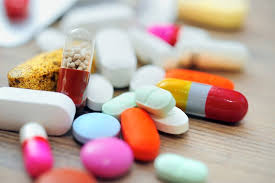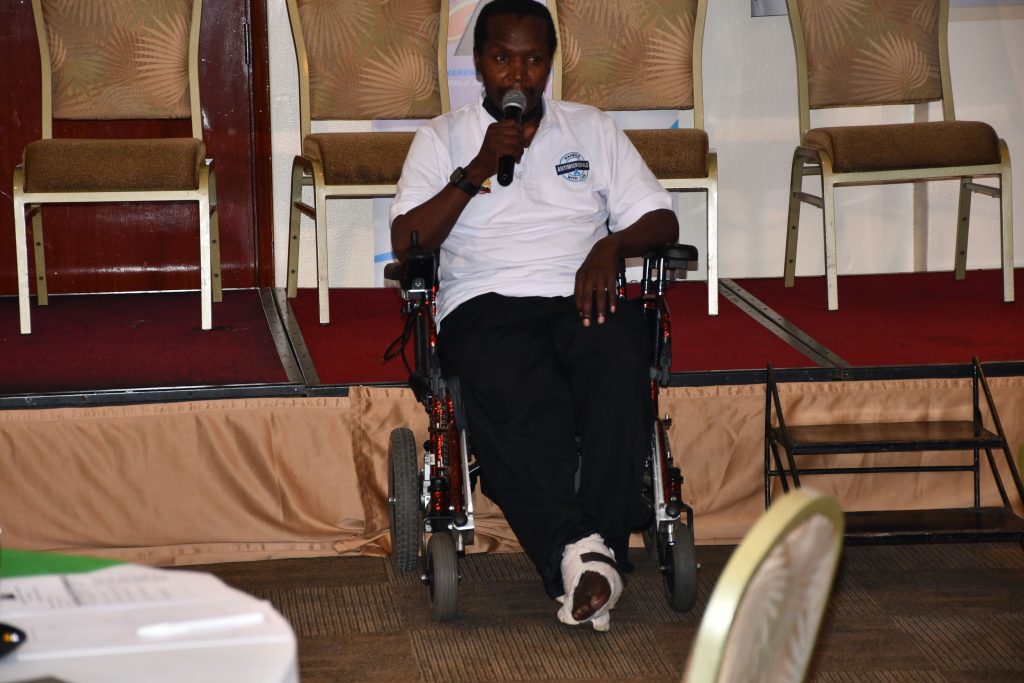 Different antibiotics used in the treatment of different infections in the body.
Different antibiotics used in the treatment of different infections in the body.
One morning in 2020, Dr John Kariuki had an accidental slip and fall in his bathroom, fracturing the right hip joint.
The medical response began with a misdiagnosis. He says the physician who first looked at the X-ray image ruled out a fracture and prescribed muscle relaxants and painkillers.
“A few days later, the pain was persistent, so I had to seek a second opinion. For the second opinion, we did a CT scan that actually elucidated exactly that I had a complete fracture of the hip joint, and now I had to undergo surgery," he explains.
 Dr John Kariuki, AMR champion and advocate, at a past event on AMR awareness in Nairobi.
Dr John Kariuki, AMR champion and advocate, at a past event on AMR awareness in Nairobi.Kariuki says he contracted a hospital-acquired infection during the surgery to correct his fracture. The infection did not go away despite all the antibiotics that were administered. The infection got so bad that it went into the bloodstream, he says.
Dr Kariuki is a veterinary public health specialist working in the Directorate of Veterinary Services.
He continues: “At one time, they thought my kidneys were about to fail. But then I had to undergo a second surgery to remove all the metals and plates that had been placed to replace the joints to try and control the infection, which had spread widely, and the region where it had affected was rotting. All the dead tissues were removed to control the infection.”
Dr Kariuki says that he acquired COVID-19 while at the
hospital, which the doctors successfully treated, but he did not recover from the surgical site
infection despite all the antibiotics that had been used on him.
After discharge from the hospital five months later, he engaged a laboratory, which did culture sensitivity tests. Results showed that out of 18 antibiotics used on him, only one could work. They administered that drug for five days, and the wound started drying up.
 Dr John Kariuki at a past AMR awareness event after he was discharged from the hospital.
Dr John Kariuki at a past AMR awareness event after he was discharged from the hospital.According to the World Health Organization (WHO), this condition is known as antimicrobial resistance (AMR) and is caused by overuse of antibiotics by humans, animals and plants, causing the resistance in people after subsequent infections.
Kariuki
says culture and sensitivity tests helped identify which drug could work on him.
Culture and
sensitivity testing is a laboratory procedure that identifies the specific
microorganisms causing an infection and determines which antibiotics will
effectively treat it.
The most
worrying situation with AMR is that it leads to organs like the kidneys failing, since all the antibiotics that are not being absorbed for treatment in the body
end up there.
He cautions
that when you administer drugs without first doing a culture and
sensitivity test, you are likely risking the patient. He says that this caused
a three-inch reduction in the length of his right leg.
Kariuki
regrets that the experience put him through a lot of pain and frustration. He could
not walk; he had to have a nurse always around him for assistance. He wishes no
one else goes through that experience.
The WHO says that antimicrobial resistance occurs when
bacteria, viruses, fungi and parasites no longer respond to antimicrobial
medicines. As a result of drug resistance, antibiotics and other antimicrobial
medicines become ineffective and infections become difficult or impossible to
treat, increasing the risk of disease spread, severe illness, disability and
death.
Kariuki says the cost of treating antimicrobial resistance is high, and not many people can afford it. “For instance, my hospital bill was
about Sh3.5 million,” he says. However,
after doing the Antimicrobial Sensitivity Testing (AST) at the private laboratory, he spent less than Sh5,500 to recover.
He says AMR has developed over time because nosocomial infections
(infections acquired in the hospitals) have developed resistance to the
antibiotics being used in hospitals. They are hard to treat because
they have lived in hospitals together with the drugs.
He says there are many other drivers of antimicrobial resistance. “For instance,
abuse of antibiotics, misuse of antibiotics, issues like underdosing or using
sublethal doses of antibiotics, using antibiotics unnecessarily to treat
infections like flus or common cold, self-medication without completing the
doses are some of the drivers of antimicrobial resistance.”
The other
problem is that some bacteria can confer resistance to bacteria that
are not resistant through a conjugation process, an exchange of chromosomal
material. It can lead to conditions like multidrug-resistant tuberculosis.
Statistics from the WHO show that Antimicrobial Resistance
(AMR) is one of the top global public health and development threats. It estimates
that bacterial AMR was directly responsible for 1.27 million global deaths
in 2019 and contributed to 4.95 million deaths across the globe.
Dr Kariuki calls for mass education on AMR for people
to understand the causes and the effects on them and the society at large. He
says: “We need to inform people on the importance of having a prescription done
by a general practitioner so that they can use the correct antibiotic and stop
using first-line antibiotics to treat simple infections.”
“They can
start with the basic antibiotics prescribed by professionals, whereby the
professionals will need to go through a process of antimicrobial sensitivity
testing, which involves culturing of samples and finding out the sensitivity of
the resultant organisms before prescribing.”
Another
major concern is that poultry and livestock farmers need
to understand the antibiotic withdrawal periods (periods within which a drug is
metabolised completely in the body of an animal). Kariuki says this will ensure there
are no antibiotic residues in milk and meat because
the resistance can be transferred from animals to humans and vice versa.
He emphasises that all people must act responsibly. He calls on healthcare professionals to promote antibiotic stewardship and consumers to avoid buying antibiotics over the counter. "Always
consult a doctor for proper diagnosis and treatment. Complete the full
prescribed dose even if you feel better early to prevent resistance from
sublethal dosages."
Kariuki further cautions people never to share antibiotics with others, as misuse drives AMR.











